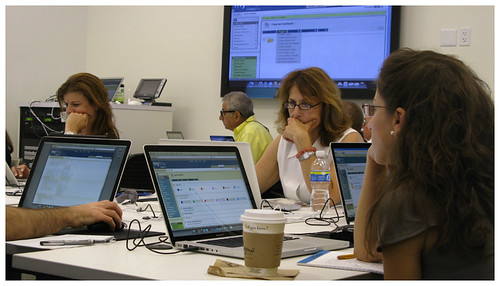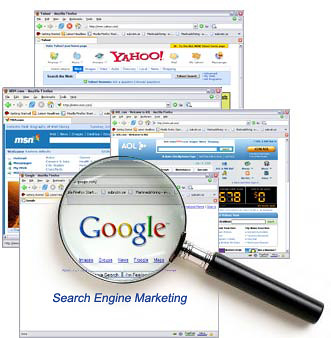EME2040 Reflective Essay
By Marla Fisher
Photo Credits to EpeSos.de on Flickr
As a college student, you take many classes and in each class taken you leave with new information. My Introduction to Technology for the Educator class is ending soon. Honestly, I had a very vague idea to begin with of how this class was going to be. This course required more contribution than a typical college course of my past experience. My personal contribution would be in-class discussions, online discussions, collaborative assignments, geocaching, digital story telling, website critiquing, creating websites e-portfolios, rubrics and blogs, as well as creating a PowerPoint presentation and presenting it to the class.
The class was assigned on a regular basis a discussion topic and each student was required to post a reply to the topic in addition to a reply to at least one classmate's post. The collaborative lesson plan was a group assignment to create a lesson plan collaboratively. Geocaching was a fun GPS scavenger hunt in which the students were to research and answer questions regarding APA format. Several collaborative in-class and out-of-class assignments were given such as a collaborative lesson plan and an instructional wiki webpage. An in-class assignment which I enjoyed was digital story telling. The students were to create a digital story of any topic using any technology tool that could create a story. I used ToonDoo and created a short comic about my career choice. Also, on a mostly weekly basis students were assigned to post in a blog about a chapter from our textbook. One of the last projects I did was an e-portfolio. I used Weebly to create my e-porfolio. Another project was to create a PowerPoint. I did mine in Pecha Kucha format and my topic I chose was how-to make a paper airplane.
The final wiki page was a collaborative assignment in which students were to communicate strictly through the wiki page. I liked better being able to communicate in other ways due to the fact that text messages and other more instant methods of contact are received directly to the person and communication can be quicker. A positive thing about wiki-only communication is that everyone can see what is being said and we can state our opinions in one place rather than using variety of communication methods. My group's wiki was overall a success. We had one student who mostly took charge of the home page and put it together very well. My group as a whole finished in a timely manner and our page was pleasing to view but in my opinion had some parts that were too wordy which might steer viewers away. We had pictures and videos as well as hyperlinks located throughout our wiki page.
One lesson I enjoyed and I can see myself using is geocaching. It is similar to a scavenger hunt and can be incorporated into a variety of lessons to make learning fun. I am looking to teach 2nd grade and young children love to explore. Another activity that I would like to use in my own future classroom is digital storytelling. Instead of your typical book report, a digital story would be a more interactive and stimulating activity for my young students.
This is a great video on How-to Geocache with Children:
References:
Ablett, Eric, Dominick Bellizzi, Carole Snitzer, Ryan Bowse, James Byers, Sarah Cove, Max Dobrusin, Adam Faye, Jeff Hank, Ryan Koopmans, and Julie Newcomb. "Wikispaces." Wikispaces. Tangient LLC, n.d. Web. 5 Dec. 2012. <www.wikispaces.com/>.
"ToonDoo - World's fastest way to create cartoons!." ToonDoo - World's fastest way to create cartoons!. N.p., n.d. Web. 6 Dec. 2012. <http://toondoo.com>.
"Weebly." Weebly. N.p., n.d. Web. 5 Dec. 2012. <www.weebly.com/ >.






